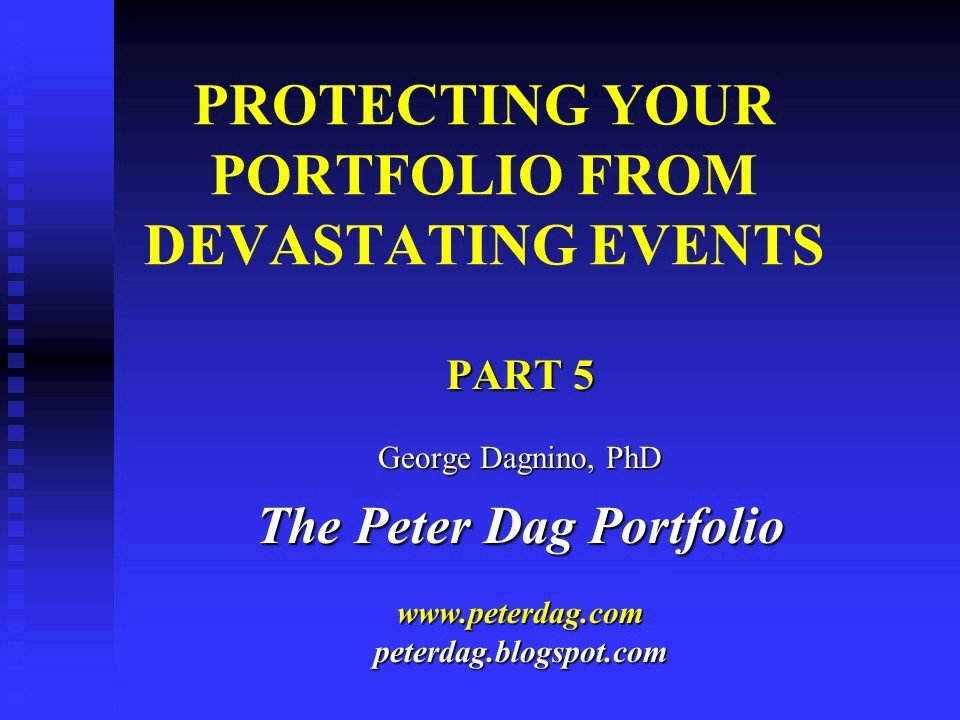3 Stock sectors to protect your portfolio now
Post on: 9 Май, 2015 No Comment

LauraMandaro
SAN FRANCISCO (MarketWatch) — Will the last speculator please turn off the “risk-on” trading lights?
The much-ballyhooed “risk-on” trade has catapulted the materials, energy and financial sectors for most of the past two years, as these cyclical areas of the market rode the back of worldwide efforts to stimulate the global economy.
Our Trading Deck has been home to a spirited debate over whether were in for a crash.
This lucrative ride looks like it’s coming to an end — at least for now — but a “risk-off” climate, where defensive sectors dominate, could be bad news for stock bulls as the market enters its seasonal May-through-October weakness.
Since the beginning of April, the market’s cyclical leaders have become noticeable laggards. Energy stocks in the Standard & Poor’s 500 Index SPX, -0.61% — the poster-child of the risk-on rally — are down 5.9% as a group through May 19, while the materials sector lost 3% and the financial sector slid 2.8%.
Taking their place at the podium: health care, up 9.6% since the end of the first quarter; consumer staples, up 8%, and utilities, up 6.6%. These are traditionally defensive sectors — places to put your money when the market’s direction is unclear and investor sentiment is more conservative.
“Those who are making those rotations are playing it a little safer,” said Wasif Latif, a portfolio manager at USAA Investment Management. “We would rather get prepared if there’s a storm.”
Get used to whipsaw market moves
Stocks are caught in a tug-of-war between the bears, focused on weaker economic data, and investors more bullish on growth, according to Wasif Latif at USAA Investment Management, who says thats likely to continue. Laura Mandaro reports. Image courtesy of Getty Images.
“Investors have forsaken old favorites (silver ETFs and energy stocks, for example) and migrated to the unloved (health care), ignored (utilities) and boringly stable (consumer staples),” added Nicholas Colas, ConvergEx Group chief market strategist, in a recent research note.
Risky business
The risk trade is ending the same way it began: as a response to government moves around the world to revive economies in the wake of the 2008 financial market meltdown.
This easy-money strategy got a needed boost last August after Federal Reserve Chairman Ben Bernanke’s speech in Jackson Hole, Wyo. set the stage for round two of the Fed’s quantitative easing policy, known as QE2.
But now the market is questioning whether the U.S. economy can stand on its feet once the Fed wraps up QE2 at the end of June, or whether the central bank will have to continue its accommodative stance — and if there’s one thing the market hates, it’s uncertainty.
“Investors are anticipating weakness at the end of QE2, as happened with QE1,” said Paul Nolte, director of investments at Chicago-based Dearborn Partners, in a recent research note. “This is a sign that you may want to start overweighting more defensive sectors and start underweighting the more cyclical sectors.”
It’s also not lost on the risk-taking camp that China and other emerging markets, which fueled much of the commodity and materials boom, are now showing fiscal restraint in the face of mounting inflation.
And lower prices for both commodities and emerging market stocks, coupled with a stronger U.S. dollar and higher margin requirements on silver and gasoline futures trading, put a tight lid on speculation. Read more: Margin hikes threaten your silver, gold, oil stake.
Defensive moves
So what can investors do?
“Rotate into more defensive sectors,” Nolte said. “We’re in the early stages of at least a few quarters where those types of sectors outperform the broad market.”
As an example, health care is seeing higher share prices and a pickup in relative strength versus the S&P 500, he added.














